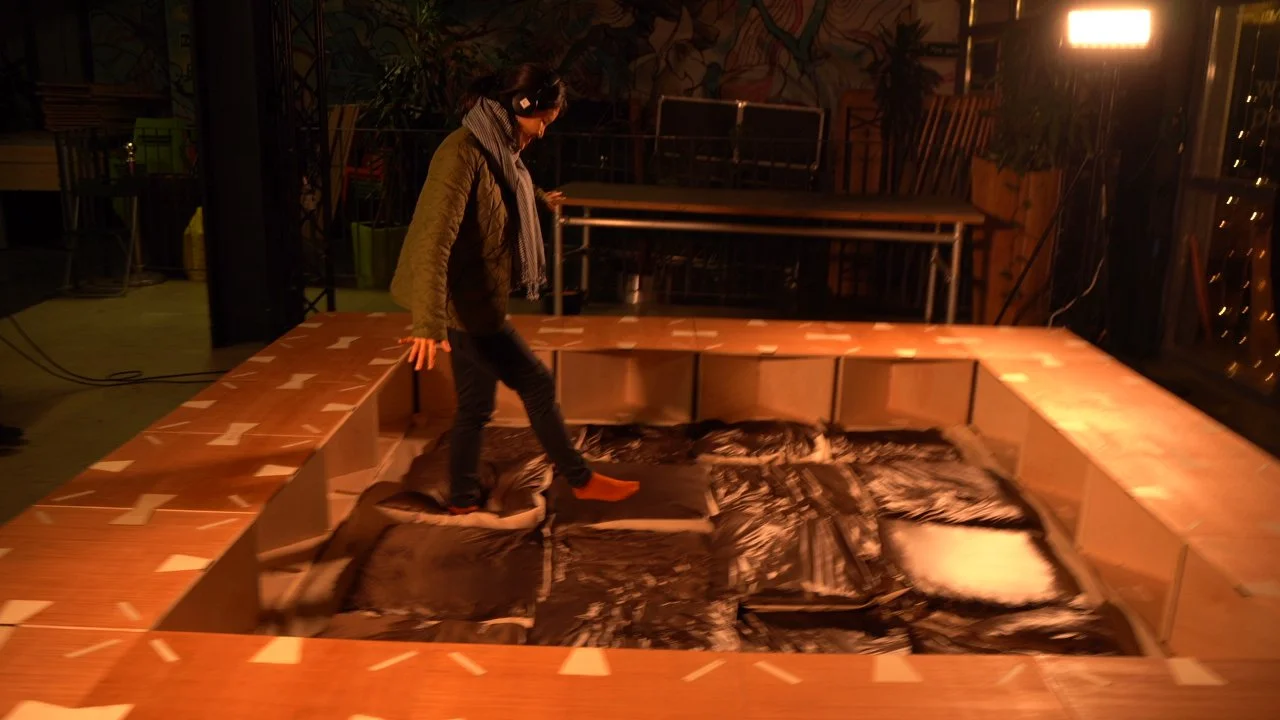
Audio-Spatial Archive for local-global community : unspace
Audio-spatial platform for communities in local and global scale
Final Project
2021 Interactive Architecture Lab, the Bartlett School of Architecture, UCL
Research question
Community resilience through an interconnected platform of memories in time and space:
How do we build a new sense of community and resilience in socio-ecology system?
Project website : https://www.unspace.co.uk/
Team
Jee Eun Lee, Laure Barthelemy, Sofia Kovalenko
Software
Unity/Kinect
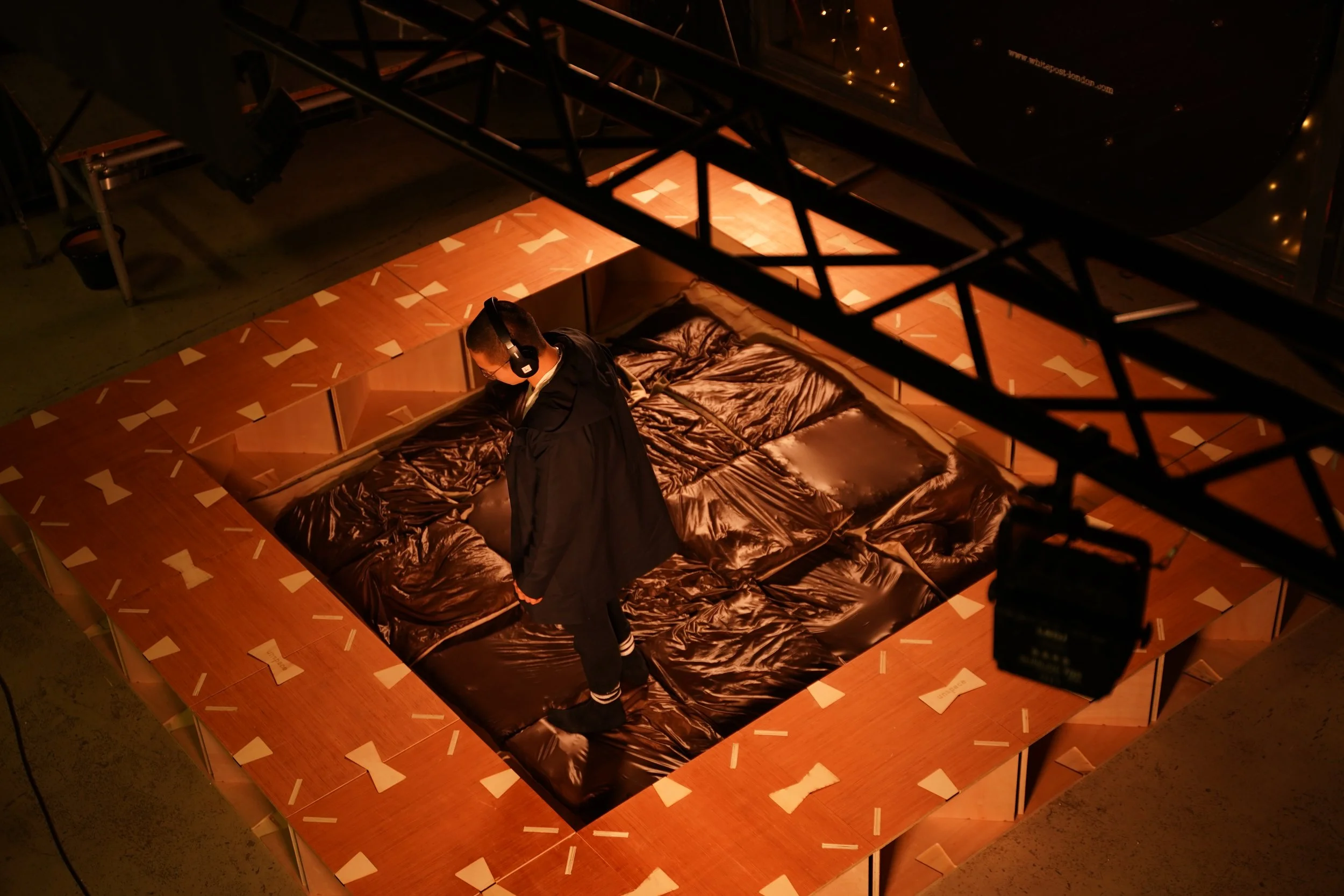
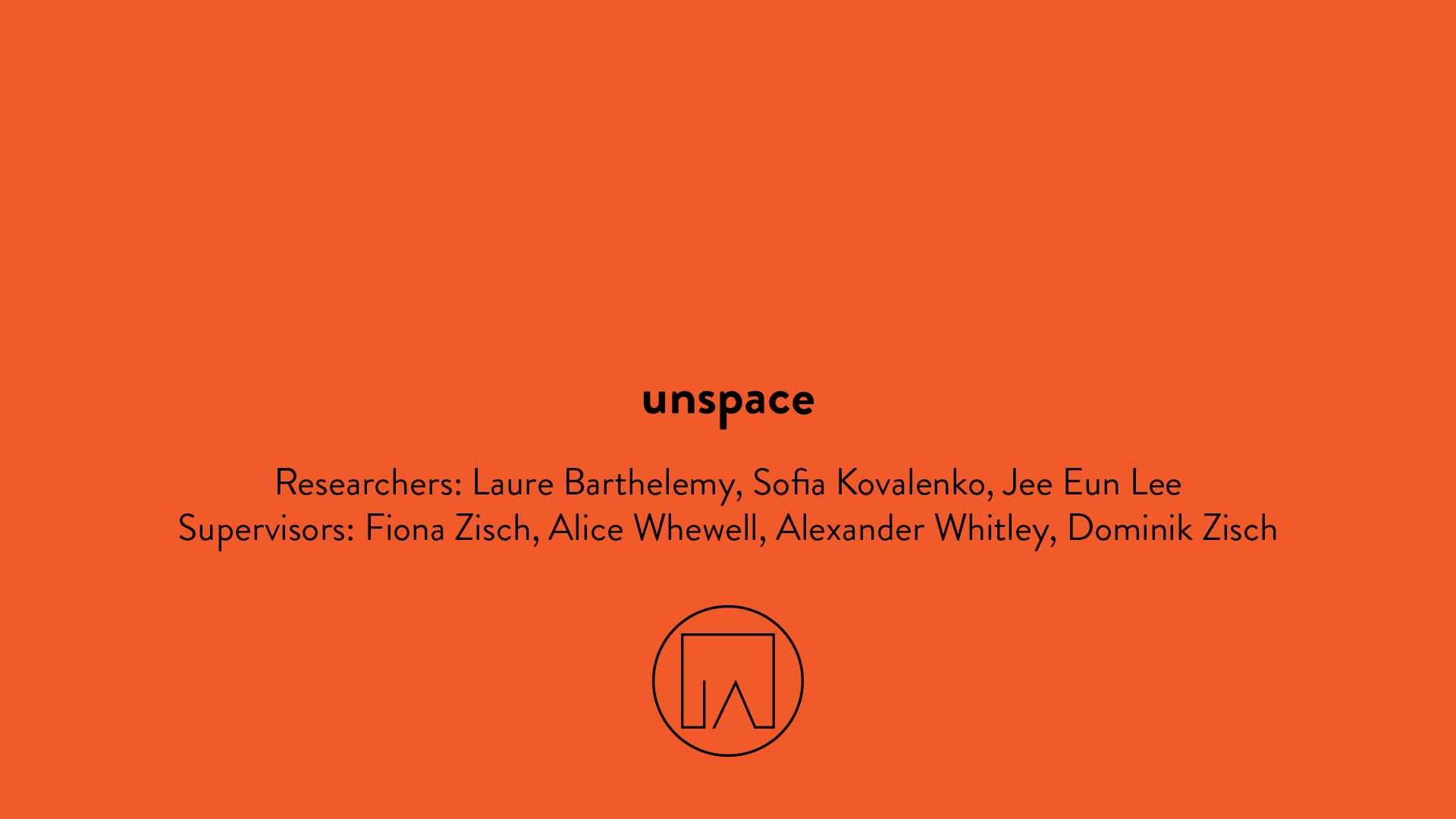
<unspace> project overview
Project
<unspace> is a platform for local communities to preserve and share their stories and memories in time and space. It is a community-oriented felt archive highlighting the sensorial exploratory feel of memory. Users can explore the community’s history through a physical experience of it. It consists of a physical interactive platform with an audio-scape composed of interviews conducted by the team. The platform itself is made up of physical materials that reflect the physical history of the locality at hand.
<unspace> is accompanied by a digital platform that documents the growing archive and makes it accessible to all. Meant to serve as a resource for local communities eventually globally, <unspace> seeks to provide an alternative way of remembering, feeling, and interacting with the world and people around us.
Ultimately, <unspace> will expand to different communities and grow to be a large-scale archive of local communities. <unspace> will serve as a resource for communities to learn from each other and help preserve and share local stories and histories on a global scale.

Project story , production development , and exhibition
Project Evolution
Phase 1 - Outreach and Community building
Memory Collecting - Interview with people in Hackney Wick to collect memories for soundscape, conducted by the team
Capturing memories in local community at rapidly gentrified area
Our first collaborator is Hackney Wick, a community in East London endangered by gentrification and re-development campaigns. We began unspace by conducting a series of interviews with local residents to get a sense of what the neighborhood was, how it operated and what its residents needed. The network of people and places in Hackney Wick was astounding, and we soon found ourselves engaging with more and more residents and localities. From these interactions, both on and off the record, we developed unspace as a tool for these residents not only to share their stories with the world, but also for them to engage in the healing process of remembering in the face of rapid change.
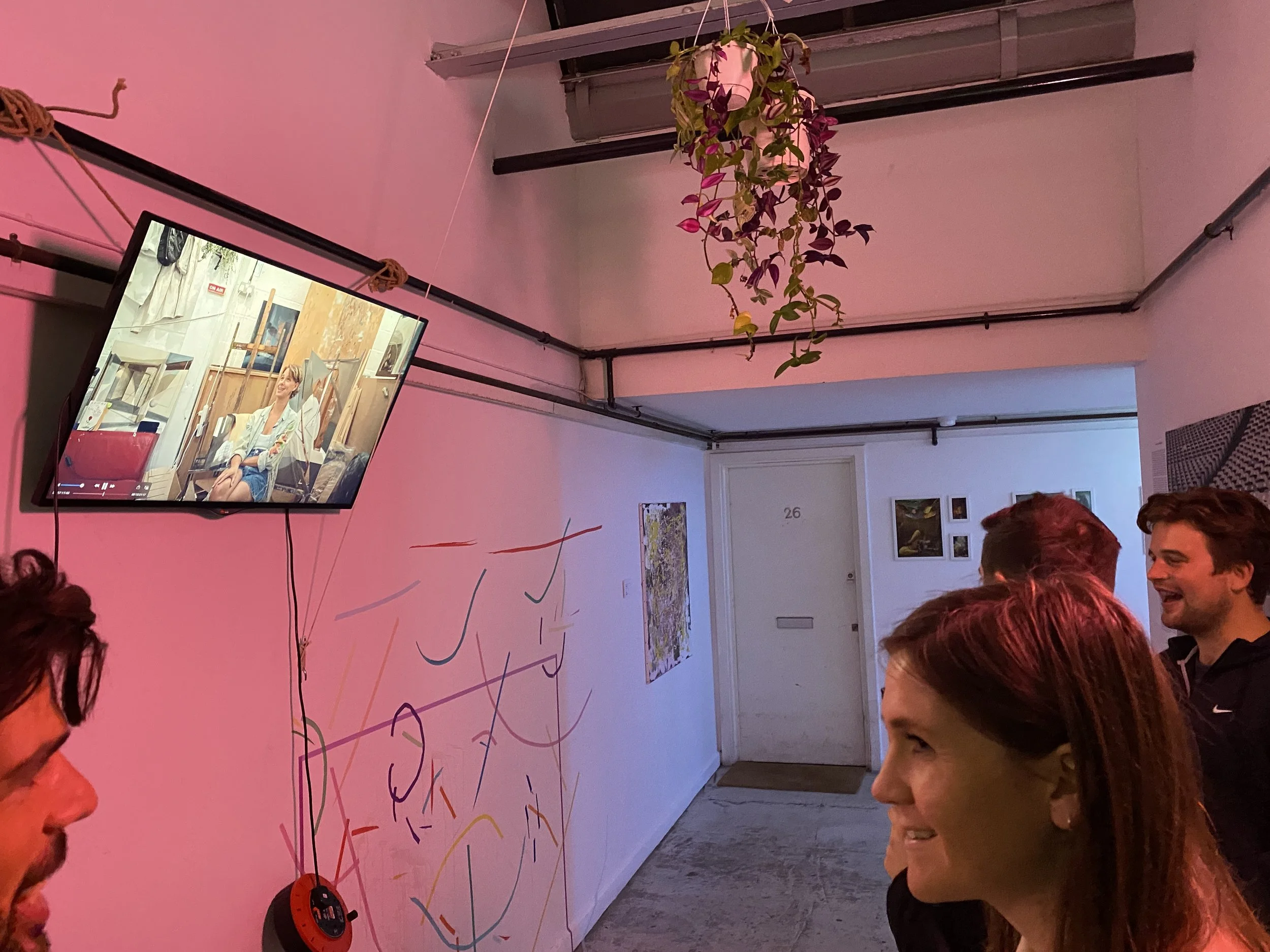
White Wall Exhibition at Olso House, August 2021
The White Walls exhibit is an initiative by inhabitants of the ex-warehouse unit Oslo House to create a bi-monthly exhibit of local artists in their hallway. One of our interviewees, invited us to participate in this showcasing of projects in August 2021. For this occasion, we created and presented a documentary video of our research and interview footage. It was the first time unspace was presented to the Hackney Wick public. The content was then shared online with other local community members, and generated larger interest in the project.
Phase 2 - Materiality and Soundscape


Each modular contains different materials visibly exposed that are to do with the history of the neighborhood.
Sensory Experience
In this first prototype, the team used physical materials as a sensorial and visual experience of the platform in order to make connections between physical and virtual memories of the community together.
For example, our team showcased some of the factories that used to reside Hackney Wick and Fish Island by using materials such as peanuts, rubber and silk. We combined those with contemporary and ever-present materials of the area referencing places such as the Hackney Marshes, the canal-side or ongoing constructions through soil, sand, gravel, bricks or pebbles. The idea was to have very different textures and temperatures evoking a variety of sensations that people could navigate while listening to the audio.
The 1st working-prototype exhibited @ Hackney Wick Underground, London as a participating project of Ars Electronica London Garden, Sept 10th, 2021

Motion Tracking and Iteration
We first used cameras to track people’s movements on the platform. Our setup used two cameras to track movement from two different angles. Our code then worked frame by frame to map the differences from one to another in order to register motion. This setup was a bit chellenging, because the motion being tracked was slightly vague, and contingent on the entire body of the user rather than just their head or their limbs. The next iteration based on this installation, the team switched a technical method in order to register people’s head movements and angles as a way of moving through the audio soundscape which allowed more accurate and corresponding feedback from virtual audio-scape.

Detected motion via two cameras that connects to the virtual environment with embedded memories(audio)

Showcasing the shared local memories of Hackney Wick(projection) and live-streamed Hackney Wick installation site (small screen on the right) at FOLD (Canning Town, London) as a part of the new media arts festival, Ars Electronica 2021
Spatial-audio test for auditory experience on the physical platform
Phase 3 - Modularity and Configurability
Portable Toolkit
On the next phase of iteration, the team focused on producing an architectural scale modular platform that could be easily set up, transported and reproduced. The core idea behind unspace is that it is a process, platform and concept that can be used and reproduced by other communities across the world. In order to do so, we wanted to create a physical installation and platform that could be transported, assembled and disassembled at will. This includes individual box units to be made up of dismentle-able pieces connected together by wood joints and carrier-bags that users can fill those up with their local and historical materials.








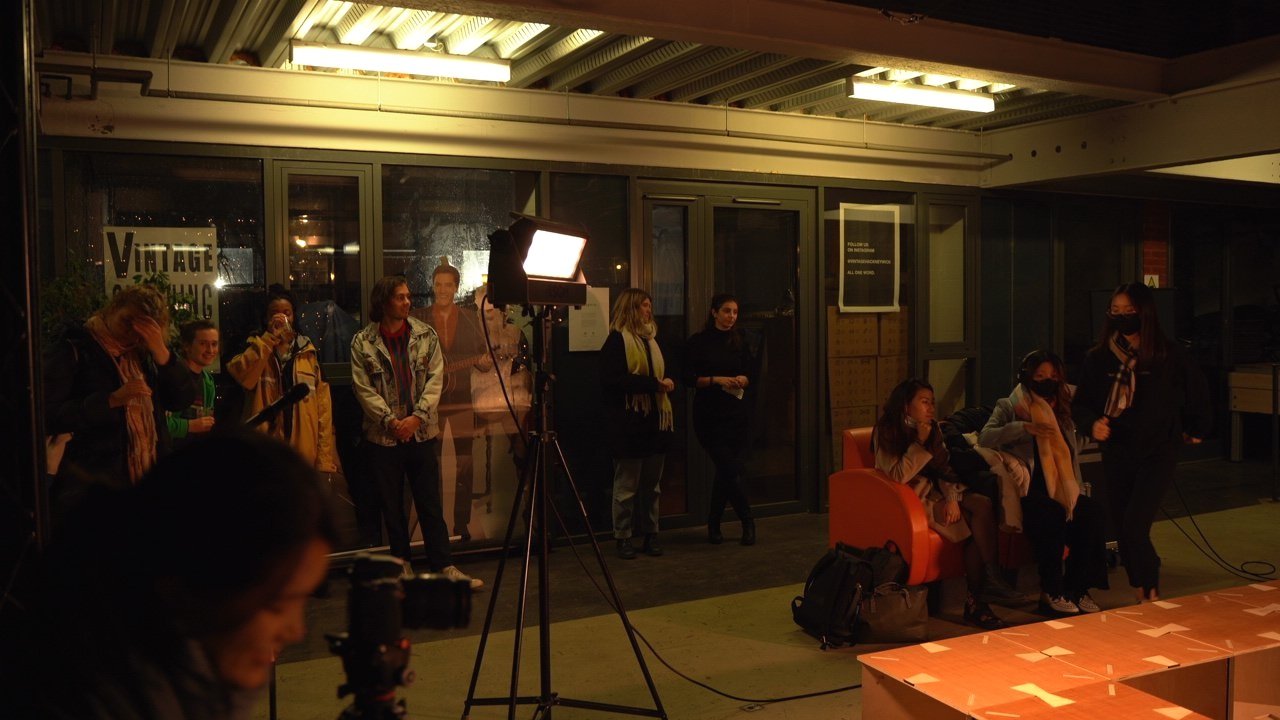









Final Installation at White Post, Hackney Wick, Nov 10, 2021
Provoking Fluid Movement -
Body Engagement by adjusting the level of interactions
From an experiential point of view, we developed our material layout and soundscape to allow for a more playful and exploratory relationship with the space from two perspectives. One is regarding relationships between visual information on materials that audiences generate. Having the materials exposed on our first prototype allowed for a visually compelling spread, but took away from the exploratory feel of the experience, as people consciously chose where to walk, how and when, instead of exploring the platform fluidly. From this observation, our team purposely chose to hide the material from view using a thin technical fabric that could allow for high sensations while removing the visual prompts of materials. The other iteration was made on tweaking motion tracking. We used the Kinect to track motion on the platform, and adjusted our virtual soundscape to reflect this increased preciseness. Tracking mostly the user’s head and its directional movements, we placed audio sources on different heights in our Unity world. This allowed users to mobilize their full body in searching for audio sources, and encouraged audience members to sit, crouch and lie down on the platform surface.
Thesis work based on the case study <unspace>
COMMUNITY RESILIENCE THROUGH INTERCONNECTED PLATFORM OF MEMORIES IN TIME AND SPACE:
How do we build new sense of communities and resilience in socio-ecology system?
Resilience is a critical quality that requires humans to continuously evolve and adapt to society and the environment's unprecedented and ever-changing climate. The sense of community has been shifting drastically from the multiple drivers of change. The concept of the project suggests bridging memories of people not only within a single locality but across different communities. The relevant principles and practices were introduced to contextualize to what "community resilience" refers.
The project posits an association of local – global interaction as a novel way to make reconciliation for threatened communities and individuals within. The paper concludes by suggesting an emerging ethos of resilience that could form a coalition across communities through interconnectedness.




















